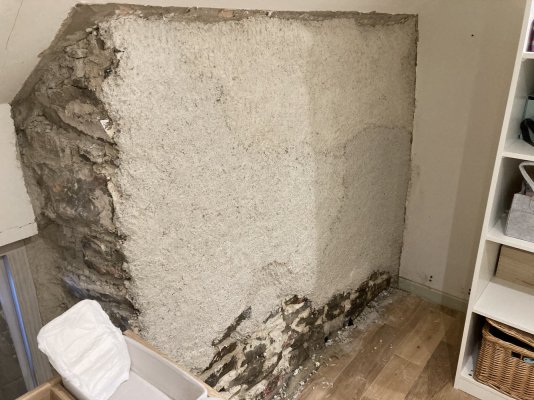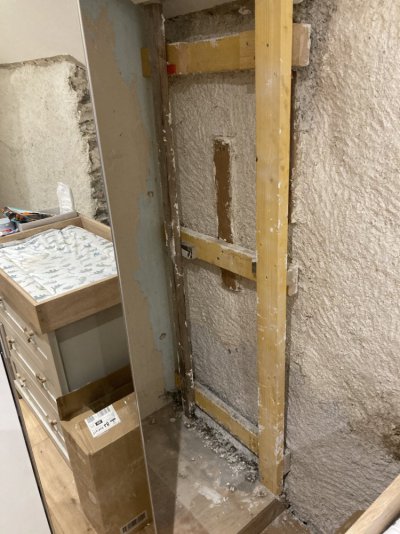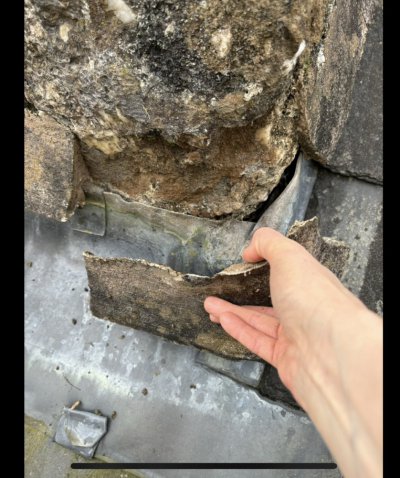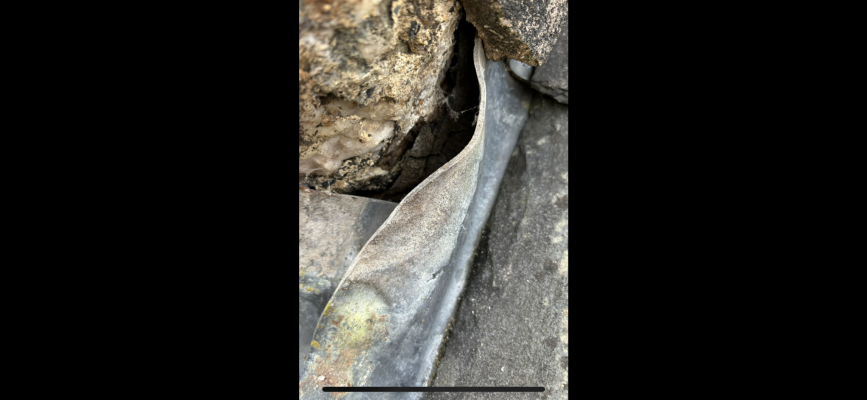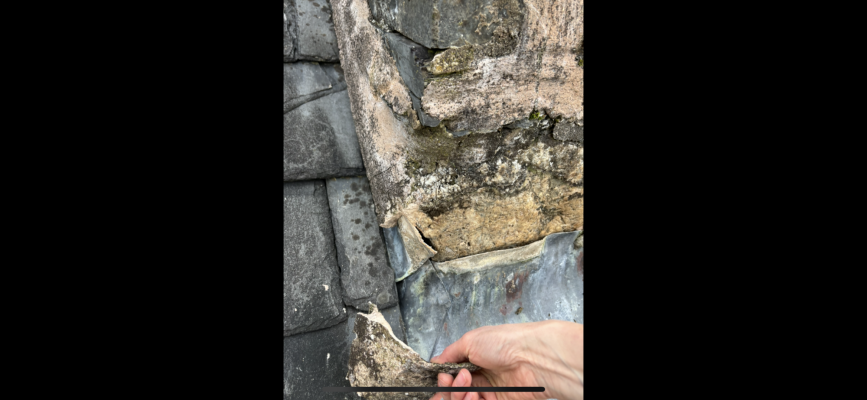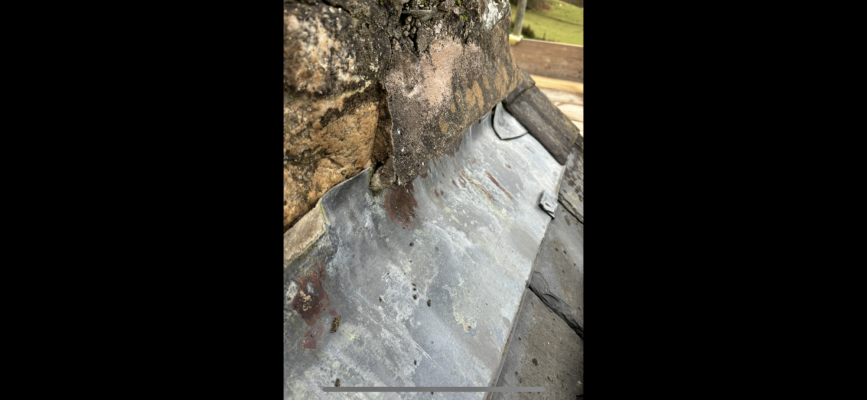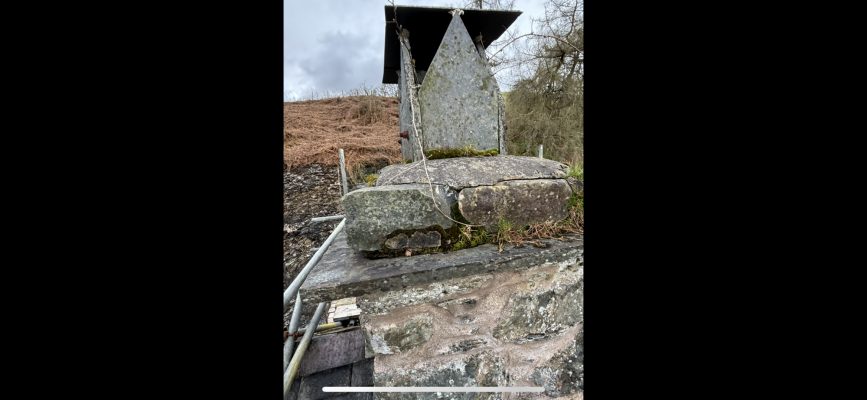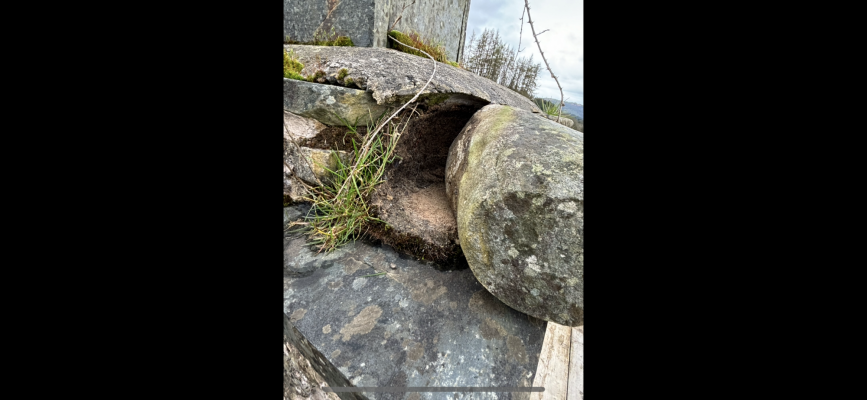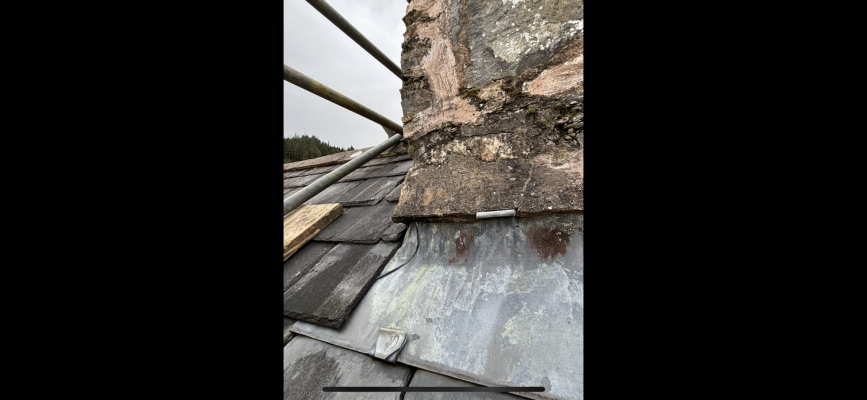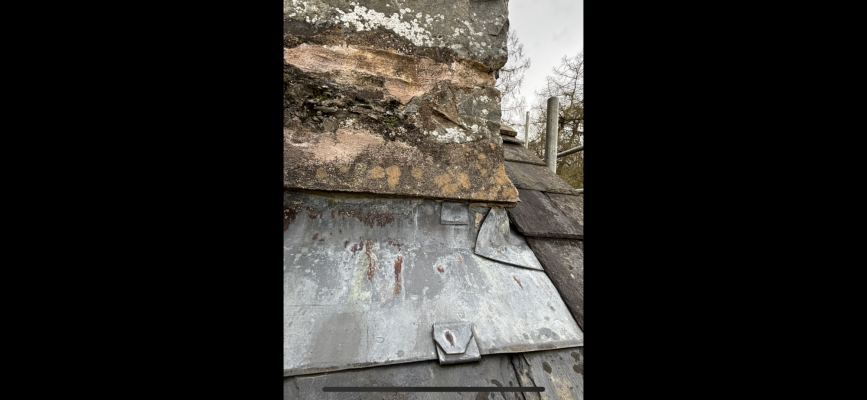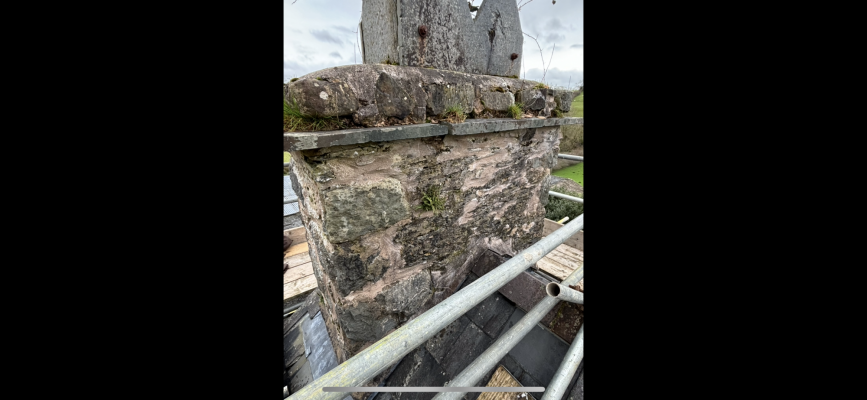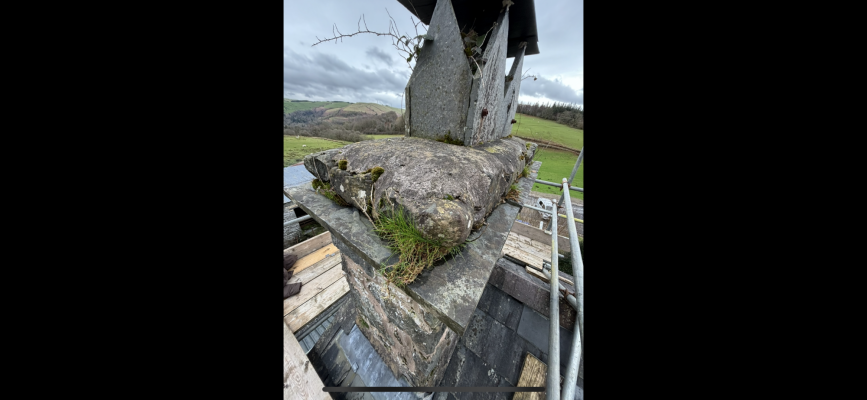Hello everyone,
I’ve loved reading your advice on here over the last few months. We’ve finally purchased our farmhouse in west wales, a rubble stone wall farmhouse early 19th C with 18c layout…
Ive wanted to post for a while now but don’t know where to start
Ill start with the first problems - damp walls. Ive learnt damp walls are cold walls, learnt that both from living in old farmhouses and reading on here!
Ours has been “done up” over the years and all the internal lime walls have been skimmed with layers of gypsum and paint inside - lime wall all blown and mouldy, it’s mostly all now stripped off apart from internal lath and plaster upstairs walls
Outside has been patched with cement render , concrete, and gosh knows what else, I thought I had but can’t find photos of the front external wall that’s worse …
The lime wash layers are peeling off and are “holding” pockets of crumbled lime , that I assume is holding damp, much of it is green…. Very bad!
As you can see this first picture perfectly demonstrates what you all say about the damp getting trapped in the walls when it can’t breathe and escape!
We are going to put the house as back to original as possible.3 coat Lime on all the walls by a local specialist.
I’ve considered IWI but am concerned about condensation and unwilling to add any insulation at all at the risk for condensation , I couldn’t face doing all this work to then find out it’s not helped!
I’ve thought about a thin coating of limeCrete render for insulation purpose with lime over the top, or a thicker hemp lime mix…
Wood wool boards to me seem to be too much of a risk…
And as I understand if we can keep the walls dry, the rooms breathing and heat on it should feel warm…
Unlike the farmhouse we live and rent in currently down the road which is horrendous cold and damp, covered in cement outside and pink plaster inside, with awful cheap pvc windows replacing the single sashes, it’s a perfect example of damp mouldy house that needs saving, alas the landlords will not save it!
We also want to life the slate flagstones, carefully, and lay a limeCrete subfloor, foam glass etc etc with underfloor heating and then carefully relay the slate flags….
I KNOW it’s a shame to lift them… but I feel that the added benefits of underfloor heating to this period farmhouse wil help save it for years to come aswel as making it a viable place to live and grown a family.
My questions then:
1)
Internal wall insulation - to bother or not to bother ? Hempcrete, hemp/lime mix, or just 3 layers of lime and crack on.
2)
Outside: remove cement by hand? Brush off old lime, take out joints? Or…. Do we get the outside sandblasted ?
3)
Once cleared outside do we then re point in lime and lime wash?
Is that the correct term / thing to do?
There’s PLENTY more to see and questions to ask but I don’t want to overwhelm!
The loft has an interesting “room” in between the 2 main trusses that is all lath and plastered which makes me think why would they bother doing that unless it was a sleeping area for servants? House doesn’t seem grand enough to have servants! But it has a “back” kitchen , scullery, so maybe they did…
Today we just found a doorway in an upstairs wall that had been plastered over and could’ve led to an attic stair but now has the shower / bathroom on the other side of it… all very interesting
I think upstairs floorboards will need replacing… we want to mill locally oak welsh floorboards… could be great…. Originals are patched with plaster (?!!) in the holes and very rotten and soft with many bits replaced by random bits of wood
It’s a great (daunting) project! And advice will be great fully recieved!
Many thanks in advance
Welshy women
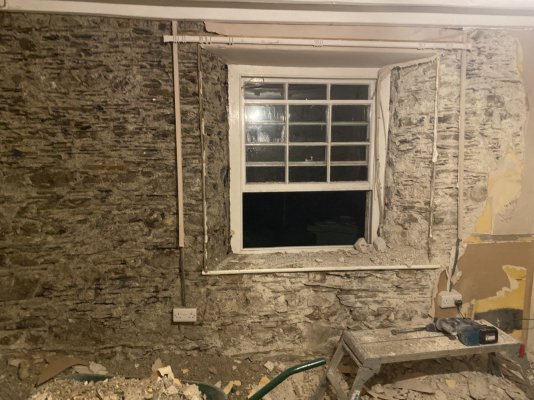
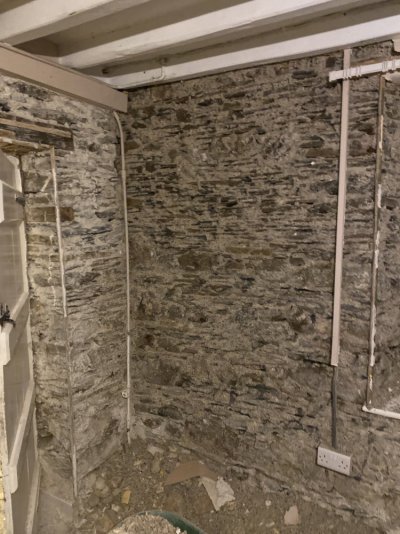
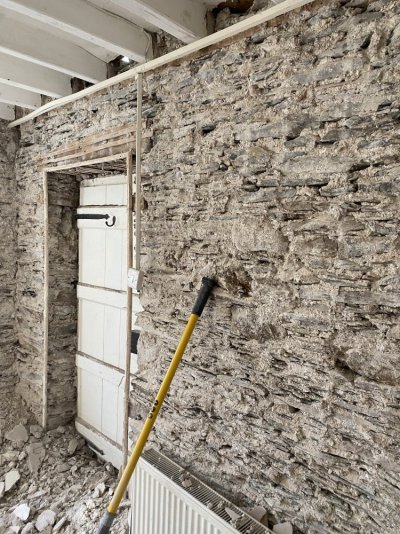
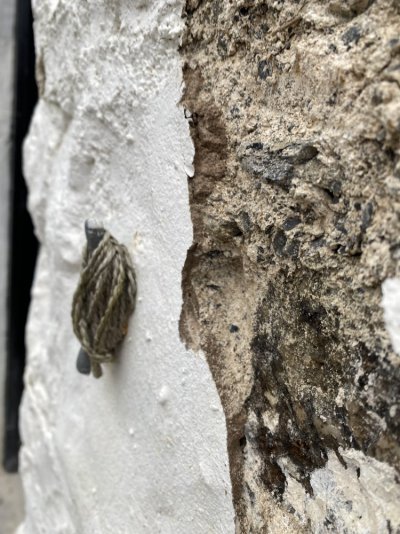
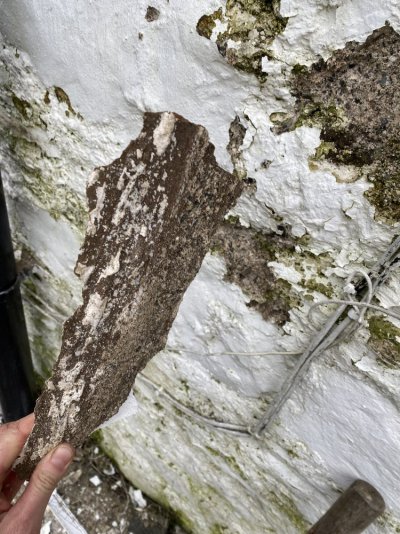
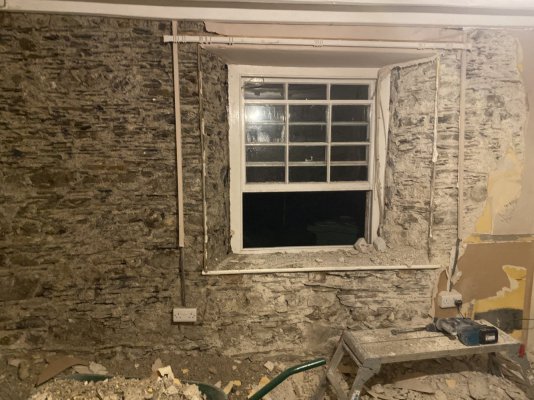
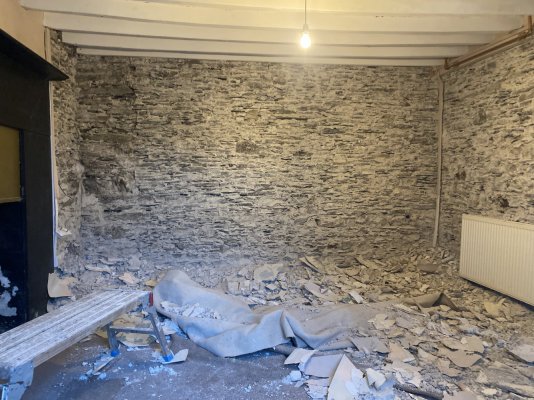
I’ve loved reading your advice on here over the last few months. We’ve finally purchased our farmhouse in west wales, a rubble stone wall farmhouse early 19th C with 18c layout…
Ive wanted to post for a while now but don’t know where to start
Ill start with the first problems - damp walls. Ive learnt damp walls are cold walls, learnt that both from living in old farmhouses and reading on here!
Ours has been “done up” over the years and all the internal lime walls have been skimmed with layers of gypsum and paint inside - lime wall all blown and mouldy, it’s mostly all now stripped off apart from internal lath and plaster upstairs walls
Outside has been patched with cement render , concrete, and gosh knows what else, I thought I had but can’t find photos of the front external wall that’s worse …
The lime wash layers are peeling off and are “holding” pockets of crumbled lime , that I assume is holding damp, much of it is green…. Very bad!
As you can see this first picture perfectly demonstrates what you all say about the damp getting trapped in the walls when it can’t breathe and escape!
We are going to put the house as back to original as possible.3 coat Lime on all the walls by a local specialist.
I’ve considered IWI but am concerned about condensation and unwilling to add any insulation at all at the risk for condensation , I couldn’t face doing all this work to then find out it’s not helped!
I’ve thought about a thin coating of limeCrete render for insulation purpose with lime over the top, or a thicker hemp lime mix…
Wood wool boards to me seem to be too much of a risk…
And as I understand if we can keep the walls dry, the rooms breathing and heat on it should feel warm…
Unlike the farmhouse we live and rent in currently down the road which is horrendous cold and damp, covered in cement outside and pink plaster inside, with awful cheap pvc windows replacing the single sashes, it’s a perfect example of damp mouldy house that needs saving, alas the landlords will not save it!
We also want to life the slate flagstones, carefully, and lay a limeCrete subfloor, foam glass etc etc with underfloor heating and then carefully relay the slate flags….
I KNOW it’s a shame to lift them… but I feel that the added benefits of underfloor heating to this period farmhouse wil help save it for years to come aswel as making it a viable place to live and grown a family.
My questions then:
1)
Internal wall insulation - to bother or not to bother ? Hempcrete, hemp/lime mix, or just 3 layers of lime and crack on.
2)
Outside: remove cement by hand? Brush off old lime, take out joints? Or…. Do we get the outside sandblasted ?
3)
Once cleared outside do we then re point in lime and lime wash?
Is that the correct term / thing to do?
There’s PLENTY more to see and questions to ask but I don’t want to overwhelm!
The loft has an interesting “room” in between the 2 main trusses that is all lath and plastered which makes me think why would they bother doing that unless it was a sleeping area for servants? House doesn’t seem grand enough to have servants! But it has a “back” kitchen , scullery, so maybe they did…
Today we just found a doorway in an upstairs wall that had been plastered over and could’ve led to an attic stair but now has the shower / bathroom on the other side of it… all very interesting
I think upstairs floorboards will need replacing… we want to mill locally oak welsh floorboards… could be great…. Originals are patched with plaster (?!!) in the holes and very rotten and soft with many bits replaced by random bits of wood
It’s a great (daunting) project! And advice will be great fully recieved!
Many thanks in advance
Welshy women








